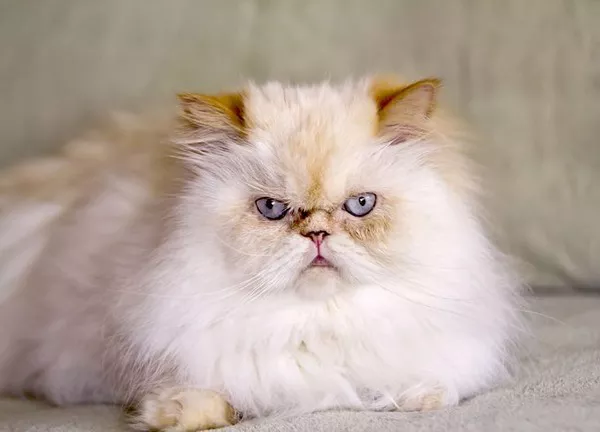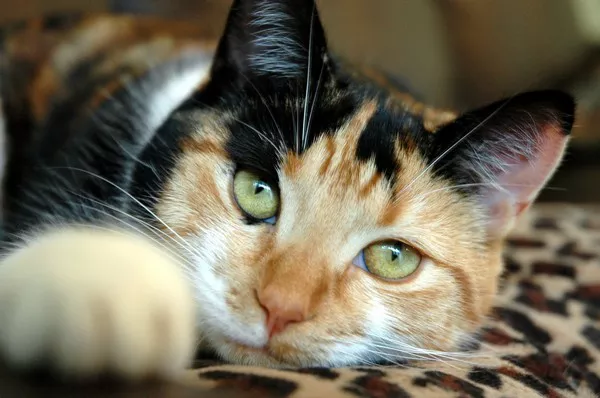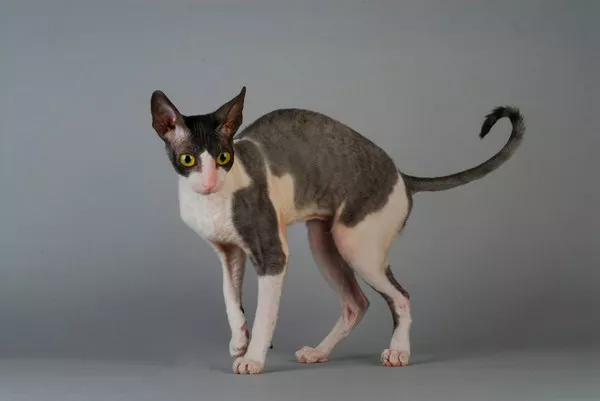Cats are known for their mysterious and enigmatic behaviors, and perhaps one of the most intriguing is the gentle, rhythmic hum of a purr. But why do cats purr, and what is the purpose of this soothing sound? In this comprehensive article, we will explore the fascinating world of cat purring, uncovering the various reasons behind this behavior and the science that underlies it.
The Mechanics of Purring:
Purring is a distinctive sound created by the vibration of a cat‘s laryngeal muscles (voice box) as they contract and relax rapidly. This action causes the vocal cords to open and close, resulting in the characteristic purring sound. Cats can produce a purr both when inhaling and exhaling, allowing them to maintain the soothing sound continuously.
While the physical mechanism behind purring is well understood, the reasons why cats purr remain a subject of curiosity and scientific investigation.
1. Contentment and Comfort:
One of the most commonly associated emotions with purring is contentment and comfort. Cats often purr when they are relaxed and content, such as when they are curled up in a warm spot, receiving affection from their owner, or kneading a soft surface.
2. Communication:
Cats are known to be communicative animals, and purring serves as a form of communication between them and their human companions. Cats may purr to convey their well-being and contentment, signaling to their owners that they are in a comfortable and secure environment.
3. Bonding and Attachment:
Purring can play a significant role in bonding between a cat and its owner. When a cat purrs while being petted or cuddled, it often signifies a deep bond and trust between the cat and the person providing the attention.
4. Stress Relief:
Interestingly, cats may also purr when they are stressed or anxious. Some researchers believe that purring may serve as a self-soothing mechanism, helping cats calm themselves in stressful situations. It’s not uncommon for cats to purr at the vet’s office or during a car ride, which can be attributed to their attempt to alleviate anxiety.
5. Healing and Self-Recovery:
There is evidence to suggest that purring may have therapeutic benefits for cats themselves. The vibrations produced during purring are believed to promote healing and tissue regeneration. It’s not uncommon to hear a cat purring while recovering from an injury or illness.
6. Mother-Kitten Bonding:
Kittens are born blind and deaf, relying primarily on touch and scent for communication with their mother. The mother cat purrs to guide her kittens to her, indicating her presence and providing comfort.
7. Hunger or Distress:
In some cases, cats may purr when they are hungry or in distress. This form of purring is often more urgent and may serve as a way to get their owner’s attention.
The Science Behind Cat Purring:
The physiological process that allows cats to purr is not entirely understood, but several theories attempt to explain it:
Nervous System Activation: One theory suggests that purring is initiated by a specific set of neurons in the brainstem that activate the laryngeal muscles and vocal cords.
Endorphin Release: Purring has been linked to the release of endorphins, which are natural feel-good chemicals. This may explain why cats purr when they are relaxed and content.
Healing Vibrations: The vibrations created during purring may have a healing effect on the cat’s body. These vibrations are thought to stimulate blood flow, promote the healing of injured tissues, and reduce pain and inflammation.
Circumstances When Cats Purr:
Cats may purr in various situations and contexts, including:
During Affection: Cats often purr when they are receiving attention and affection from their owners. The soothing sound of a purring cat can be a sign of their happiness and relaxation.
Kneading: Cats may purr while kneading with their paws on a soft surface, such as a blanket or your lap. This behavior is reminiscent of kittenhood when they kneaded their mother’s belly to stimulate milk flow.
In a Relaxed Environment: Cats may purr when they are lounging in a warm and cozy spot, indicating their comfort and contentment.
When They Greet You: Some cats may purr when they greet their owners after a long day. This can be a sign of excitement and affection.
When They Are Injured or Ill: Cats may also purr when they are injured or unwell. In such cases, purring may help them relax and cope with pain or discomfort.
In Stressful Situations: As mentioned earlier, some cats may purr when they are stressed or anxious, such as during a vet visit or when encountering unfamiliar environments or people.
When to Be Concerned:
While purring is generally a normal and healthy behavior, there are instances when it may signal an underlying issue that requires attention. Be vigilant if you observe the following concerning signs related to purring:
Prolonged or Excessive Purring: If your cat is purring excessively or for extended periods, especially if it’s accompanied by signs of distress, it may indicate pain or discomfort.
Change in Purring Behavior: If your cat suddenly starts purring more frequently or in situations where they didn’t before, it’s essential to investigate the cause, as it could be related to stress, illness, or injury.
Labored Breathing: If your cat is struggling to breathe and purring seems difficult or labored, this is a serious concern that requires immediate veterinary attention.
Loss of Appetite or Lethargy: Purring combined with a loss of appetite, lethargy, or other concerning symptoms can be indicative of an underlying health issue.
Visible Signs of Pain: If your cat is purring while displaying signs of pain, such as limping, vocalizing, or guarding a specific area of their body, consult your veterinarian.
Conclusion:
The enigmatic world of cat purring continues to intrigue and captivate cat owners and researchers alike. While many questions remain about the precise mechanisms and reasons behind cat purring, it is evident that this soothing behavior serves various functions in a cat’s life. Whether it’s a sign of contentment, a healing mechanism, or a form of communication, the gentle purring of a cat is a testament to the unique and complex nature of these beloved feline companions. Understanding the context and cues associated with purring can deepen the bond between you and your cat and help ensure their well-being.



























